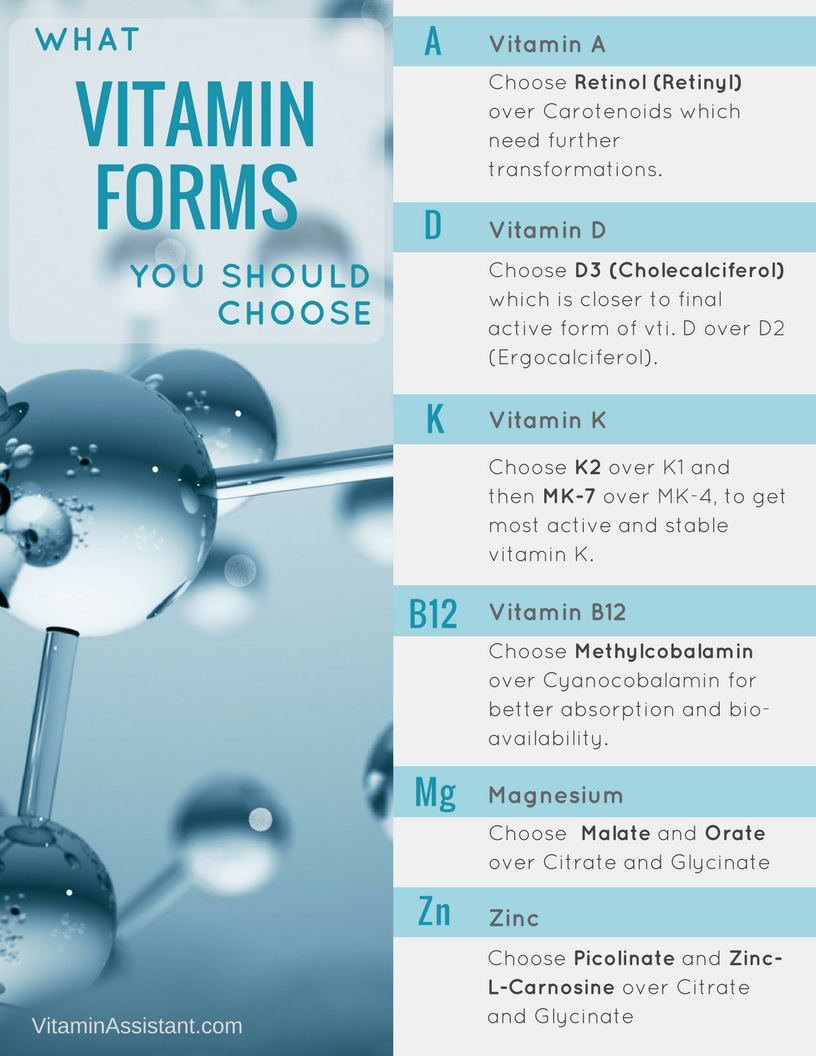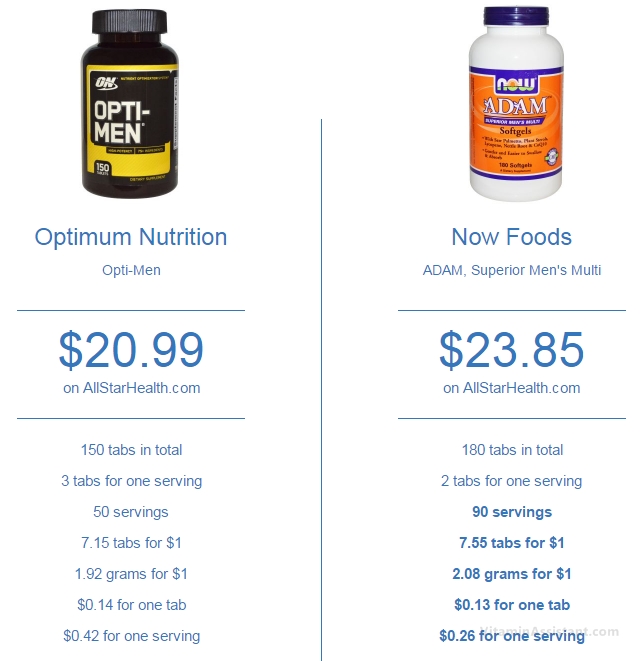
There are hundreds of companies on the dietary supplements’ market and each of them offers hundreds of vitamin products, which combined gives the enormous number of options for the customer. While having a few alternatives to choose from, in general is always better than being convicted for the ‘one and only’, picking the good vitamins from thousands of products, where every one is claimed to be the ‘best vitamin’, ‘an ultimate choice’ and on the ‘top of 2016, 2017 rankings’… it’s a really tough decision to make. Without some knowledge about vitamin world, you can find your self feeling like Mr Anderson, choosing between red and blue pill. Although, you have pills in all colors of the rainbow. Well, let us be your oracle and bring some answers for your questions.
Forms of vitamin compounds
Let’s take a Vitamin A for example. Quick lookup to Wikipedia will give us this definition
Vitamin A is a group of unsaturated nutritional organic compounds that includes retinol, retinal, retinoic acid, and several pro-vitamin A carotenoids (most notably beta-carotene).
In general, we could use this formula “Vitamin X is a group of Y…” for most vitamins. This is very important to be aware of - nearly every vitamin can occur in one of many different forms. What’s even more important is that one form is not equal to another one in terms of usefulness for our organism. Although being classified as the same group of chemical compounds, each differ in absorption ratio, bio-availability ant potential toxicity.
The form of the supplement has a direct effect on the fact weather given vitamin or mineral will be absorbed by the organism, which we want, or rather it will be ignored or classified as waste and then expelled from our body. If for instance, the level of absorption of given form of Vitamin B is around 10%, it means that when we swallow a capsule with 100mg of the supplement, our organism will not use more than 10mg and the rest is wasted. So in other words, we throw 90% of the money we paid for the product, down the drain.
Moreover, it’s worth to notice the difference between vitamins and pro-vitamins. A vitamin is an ultimate form of the given compound which is ready to use by our organism. A pro-vitamin on the other hand, is just a material that can be transformed to the vitamin, but to do so, the organism has to do some work, other substances and favorable conditions are needed as well. On the way some things can go wrong which will lower the conversion rate and finally we end up again with absorption of just a few percent of what we consumed. Thus, always choose vitamins over pro-vitamins.
There will be an individual post dedicated only to different forms of vitamins, but here we will give some hints already.

Quantity price ratio
Choosing the best product of any kind is always a matter of getting the highest quality and quantity with the lowest amount of money. As we covered already the quality of supplements in the previous section, let’s focus now on quantity/price ratio.
The manufacturers don’t make it easy for you - when you take two multivitamin products and want to compare how much the real value (the total amount of nutrients) you get for the price with one product and compare it to another one it’s not that simple. First of all each product can have a different number of tablets inside the container. So, the question is - is it better to pay $15 for 120 caps or maybe $23 for 160 tabs? Simple math will help you here pointing at the first product as a winner - it’s more profitable to pay $15 for 120 items than $23 for 160, no doubt about it. That’s a pretty quick answer but is it correct? Not necessarily. It can be true, when an item is the value itself like let’s say a match or a nail, but here in case of supplements, a cap or a tab is just another container for a value we’re concerned about. And those containers are of different size and with different amount of content for given products.
So now, to be sure which multivitamin comes with a better quantity/price ratio we also need to take into account how much nutrients does one cap have. To do that, we can go and look at the “Supplement Facts” table on the products label and summarize all of the amounts of particular ingredients for both products, then go back to our first equation and make use of our additional variables to have the final answer. So do we have the final answer now? Not quite yet. We have to pay attention to one more thing - the “Supplement Facts” table prints its values per serving not per capsule or tab. And serving size may vary from one to even 6 capsules. So one more time, we need to come back to our calculations and do one more division if particular product has a serving size bigger than one capsule. And now we got it!
While this is quite easy task to do, that’s really a lot of work to go through all the ingredient, type them into MS Excel sheet and then do the calculations and final comparison. And you have to do it for at least two products, what if you’re choosing between 4 of them? That’s way to much effort taken for good spending money on your vitamin. Thankfully now, you don’t have to do this all by yourself - the VitaminAssistant will do that for you.
Let’s take a look at the example of comparing two very popular men multivitamin products. As you can see we have very similar items, but it is hard to compare them at the first glance. On the left we have Opti-Men with 150 tabs inside and 3 tabs per serving with the best offer of $20.99. The other multivitamin, the Adam by Now Foods is offered for $23.85 and it comes with 180 tabs and the suggested serving size is 2 per day. When you look at all those numbers it’s hard to tell which product is more beneficial, but if one tell you that buying the Now Foods product, for $1 you will get 2.08 grams of nutrients comparing to 1.92 grams in case of Opti-Men, you will have no further doubts which product comes with a much better quantity/price ratio and most probably is a better option to spend money on.
Your sex and age does matter

Men and women, we are in 99% exactly the same living beings, we both have the same heart and brain, our body is built of the same tissues, we both walk on two legs and our organisms are powered with the same food. And this is all true… in 99%, because, no one will argue with that, we have some slight differences.
Exactly the same approach we can apply when it comes to vitamins and minerals that our bodies use. No matter if you’re a man or a woman your metabolism, heart, blood, brain, all the chemical reactions in your organism - it all works in the same way and it needs the same micro-elements to run. With just a few slight differences.
Those differences are the dosages of iron, calcium and B-complex vitamins such as niacin or folic acid. Women before menopause need more iron than men due to loss of this mineral from menstrual bleeding. After menopause the requirements for the iron lowers and equals to what men need, but on the other hand she needs more calcium now to preserve bone strength.
Women also need more folic acid especially before and during pregnancy which helps prevent neural tube defects (NTDs), but also even if she’s not planning to have a children, folic acid helps regulate metabolism and supports hair & skin health.
The other reason to look for gender-specific multivitamin is that they very often contain other ingredients, mostly herbs, which are intended to influence a production of male or female hormones. So men would normally want to have higher level of Testosterone which makes them more confident, feel healthy and strong and for women the most important is the proper level of Estrogen. Testosterone and Estrogen have antagonistic effect on each other, thus taking herbs that promotes emission of opposite gender hormones seems like not a very good idea.
Although, to be honest the amounts of those herb ingredients in one a day multivitamin capsules are very small and in many opinions - they don’t have a much effect.
Do I need so much of vitamins?
Looking at a multivitamin product label, one can think of why those daily values are so high? Do I really need to intake 5 times more of Vitamin X than recommended by the Food and Drug Administration (FDA)? Is that even safe? To answer these questions, first let’s have a look on what daily values really are…
The Reference Daily Intake or Recommended Daily Intake (RDI) is the daily intake level of a nutrient that is considered to be sufficient to meet the requirements of 97–98% of healthy individuals in every demographic in the United States. While developed in USA it has been used in other countries though it is not universally accepted.
The RDI is used to determine the Daily Value (DV) of foods, which is printed on nutrition facts labels (as %DV) in the United States and Canada, and is regulated by the Food and Drug Administration (FDA) and Health Canada respectively.
So what happened was that the scientists surveyed a big group of people across the United States, asking them what they normally eat during the day, then they did the average of the poll answers, calculated the amounts of nutrients that food contained and adjusted the results to fit the 2,000 calorie diet. All of this took place in 1968 and was partially updated for vitamin K, selenium, manganese, chromium, molybdenum, and chloride in 1989.
This doesn’t sound like a solid base for estimating the actual need for vitamins and minerals for us to stay healthy. First of all, the RDI recommendations give the minimal levels of the nutrients that are meant to let you be healthy, or rather not to fall into diseases and ailments caused by the lack of given vitamin or mineral. What about the levels for optimal health? They are for sure higher.
Also, we cannot be sure that people in the above study were healthy and ate good, especially taking into account that 1960s was a decade of backyard barbecues and lots of junk food. The fact they were not diagnosed with any illness in that time doesn’t mean they organisms were in perfect shape - our body is a supper machine with great defense systems, it takes years even for diabetes or cancer to break it. What I mean here is that we do not know if those levels of nutrients, that examined people were consuming, helped to straighten the their organisms… or maybe to break it.
